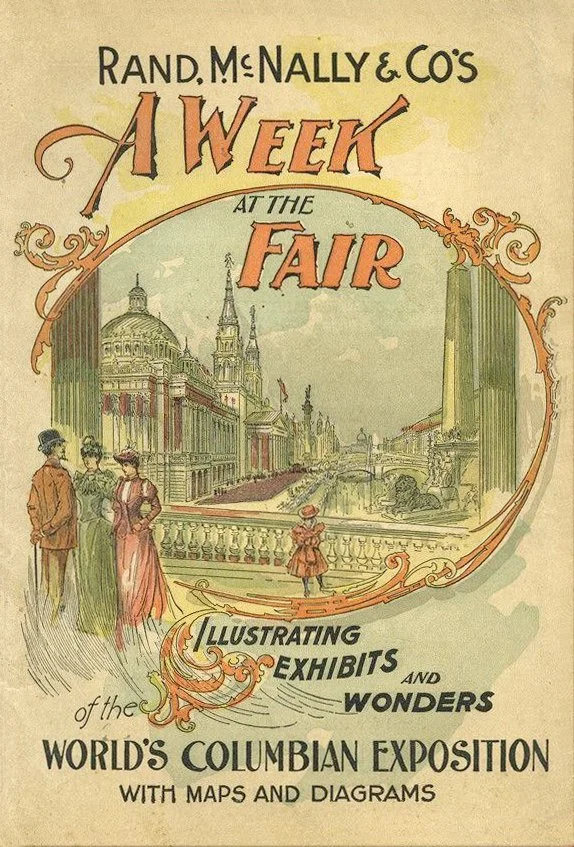
The Mecca as World’s Fair Hotel
The cover of A Week at the Fair, one of many guides to the 1893 World’s Columbian Exposition, produced by Rand, McNally & Company, 1893.
Hotel Del Prado, Chicago, ca. 1900.
Part of an 1893 advertisement for the Mecca Hotel, by the International Cyclists’s Association and League of American Wheelmen.
Part of an 1893 advertisement for the Mecca Hotel, by the International Cyclists’s Association and League of American Wheelmen.
After the Fair’s end, the Mecca Flats operated solely as an apartment building.
Children playing in the Mecca Flats atrium.
The 1893 World’s Columbian Exposition: Where did tourists stay?
There were many hotels and boarding houses that were developed to coincide with the six months (May—October) that the 1893 World’s Columbian Exposition was open to the public. The millions of projected visitors would need places to stay, especially because most guidebooks, such as the one from Rand McNally & Company seen on the left, recommended that tourists spend at least a week at the Fair to have a chance of experiencing most of its sights.
Many of the existing hotels in Chicago’s central business district, the Loop, were used by Fair tourists. In fact, Mark Twain spent the entirety of his visit to the Fair in his downtown hotel, recovering from illness instead of visiting the grounds. Others stayed in hotels closer to the fair grounds in Hyde Park. During the Fair, there were at least eleven hotels in operation in Hyde Park alone. One of these was the Hotel Del Prado at 59th Street and Dorchester Avenue. It continued to be used after the fair, including for longer-term guests like University of Chicago professors (Grinnell 2001:33), until it was demolished in 1930. Today the International House sits atop its footprint. (The similarly-named but unrelated Del Prado Apartments can also be found in Hyde Park).
The Mecca As a Hotel, 1893
Although the Mecca Flats were designed to be apartments, a certain number of rooms were set aside for use as a hotel during the 1893 World’s Fair to cash in on the tourist dollars flooding the area. A total of 98 flats had been constructed in the Mecca, and these were available as “five to seven room furnished suites with bathrooms”, as well as “single rooms for seventy-five cents to two dollars per day, with corner and bay-window rooms costing slightly more” (Bluestone 1998:390). The interior atria were set up as parlors for guests, including the Ladies Parlor seen in the advertisement here.
But the Mecca Hotel was a five-mile walk north of the 1893 fairgrounds, unlike other options, such as the Hotel Del Prado, which was across the street on the Fair’s Midway Plaisance. There was a streetcar running north-south on State Street, and a station for southbound trains just to the west on 33rd Street (Bluestone 1998:390). Still, the Mecca was far from the fairgrounds for many guests, and the projected revenue stream faded quickly when the economic depression of 1894 struck soon afterward.
The Mecca Returns to Flats, 1893-1952
After the Fair’s end, the Mecca Flats operated solely as an apartment building. Its original 98 units were subdivided, and subdivided again, as its tenancy turned from white to Black (beginning in 1912) and as the Mecca and other buildings in Chicago’s Black Belt continued to provide increasingly dense housing for the new Chicagoans who made the journey from the rural South to the urban North during the Great Migration.
< Previous Page | Next Page >





